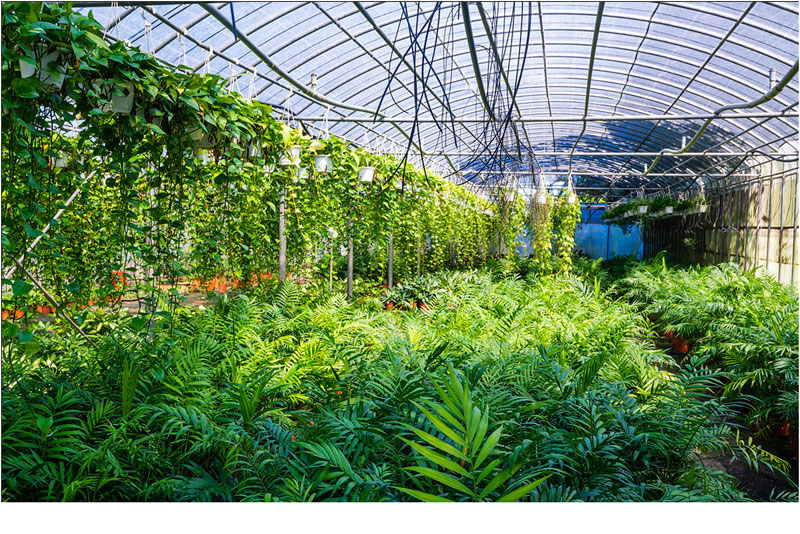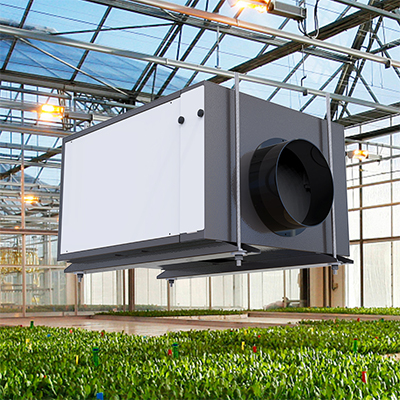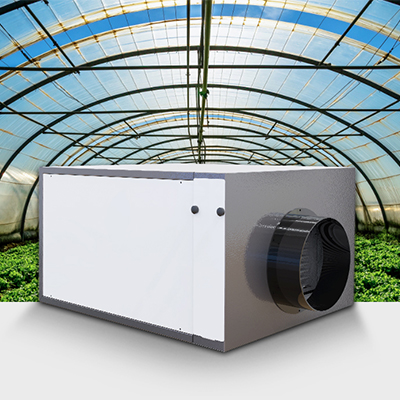Humidity is an element that few people pay attention to. Most plants have no requirements for humidity. If you are a fan of tropical foliage plants and have some rare tropical or subtropical local plants, you can’t ignore the humidity problem. Because these plants need enough humidity to grow well. If you like succulent plants or cacti, these plants prefer a dry environment. So how to control the humidity of the domestic environment? In this article, we will introduce the ideal indoor humidity in detail, discuss what is low humidity and what is high humidity, and how to adjust the humidity level of the space.
What is relative humidity (RH)?
Usually, what we call humidity is actually relative humidity, which is used to express the humidity level in the space. Relative humidity refers to the percentage of water vapor pressure in the air and saturated water vapor pressure at the same temperature, or the ratio of the absolute humidity of wet air to the maximum absolute humidity that can be reached at the same temperature. So humidity is usually expressed in percentage.
Humidity detection is also very helpful to our daily life. You can use them to detect the most comfortable moisture content for humans, animals and plants in the room.
Tips: Temperature plays an important role in the humidity level. The higher the temperature, the lower the degree of vaporization and the lower the humidity. Conversely, lower temperatures and higher evaporation will lead to an increase in humidity.
What is the ideal humidity for various indoor plants?
80% – 90%: This extremely high humidity level is usually a symbol of tropical climate. If you have plants that thrive in such a humid environment, such as some begonia, it is recommended to plant them in a rainforest tank or greenhouse. The humidity in the rainforest tank or greenhouse can easily reach more than 80%.
60% – 80%: This humidity is a paradise for tropical plants, but to be honest, it is difficult to maintain such high humidity indoors. Tropical species are sensitive when the humidity is below 70%. Therefore, if you want your plants to thrive, you must find ways to increase the humidity.
60% – 40%: humidity preferred by most indoor foliage plants.
10% – 40%: Cacti and succulent plants will like this humidity very much (excluding cacti plants growing in the rainforest, such as silk reed). In addition, foliage plants cannot adapt.
Expert tip: Why do succulent plants and cacti still have no problem when the humidity is lower than 30%? The secret is that their leaves can hold water, which enables them to survive in dry conditions for a long time.
How to maintain a good indoor humidity level?
First you need a hygrometer. The hygrometer is a very useful small tool for measuring humidity levels. It should be emphasized that observing plants can help us find any problems in time and save time.
What happens when the humidity is too high or too low?
1. Problems caused by low humidity
The tip and edge of the leaf become yellow or brown, commonly known as scorched edge;
Flowers and leaves easily wither;
Flowers and leaves droop, and the whole plant is decadent.
2. Problems caused by high humidity
Gray mold appears on leaves and flowers;
The stems and leaves show signs of decay.
Tips: These common symptoms can help you react in time and solve problems caused by low or high humidity. If the humidity has been adjusted to an appropriate level, and your plants do not seem to have any change, you should consider whether it is caused by other reasons, such as excessive watering?
How to increase or reduce the humidity in the greenhouse?
1. Increase humidity
Humidifier: Using humidifier is a very fast and effective way to improve room humidity. It is required to test the time and period of driving every day.
Use plant aggregation to improve local humidity: Putting plants together can also improve local humidity, which is also very effective. Regular sprinkling of water on plants helps in this process. It should be noted that plants should not be stacked too crowded, and there should be enough space around each plant.
Use plants to increase humidity: If you like waterlogged pineapples, planting some waterlogged pineapples at home can significantly increase indoor humidity, because there is a “bowl” among the leaves of these strange epiphytes to store water. Keeping water in these “bowls” can improve indoor humidity.
Pebble tray: spread the tray under the flowerpot with small pebbles (about 0.5cm in diameter), then put the flowerpot on it, and fill the tray with water. Because there are pebbles, the flowerpot is a certain distance from the water surface in the tray, so that the root of the plant will not rot. Of course, you can also put a few pots of water in the room, which is also a good way.
2. Reduce humidity
Dehumidifier: If the relative humidity in the greenhouse is too high and your plants do not need too high humidity, you need to use a greenhouse dehumidifier to reduce the humidity, such as tropical and subtropical areas, coastal cities, and riverside cities.
Use plants to reduce humidity: Phyllostachys multifida, Nephrolepis bostonis, chlorophytum comosum, Dendrobium drumstick, Cymbidium songaricum, Ivy, etc. These plants are moisture absorbing plants that can help decrease the humidity.
Preair is a famous commercial dehumidifier manufacturer. We produce greenhouse dehumidifiers with different sizes and capacities to meet customers’ specific needs. As a professional dehumidifier OEM/ODM, we can offer you customized products and thoughtful services. Welcome your inquiry.
Post time: Nov-29-2022
 +86-13376814803
+86-13376814803  robert@hzhongtai.com
robert@hzhongtai.com 














